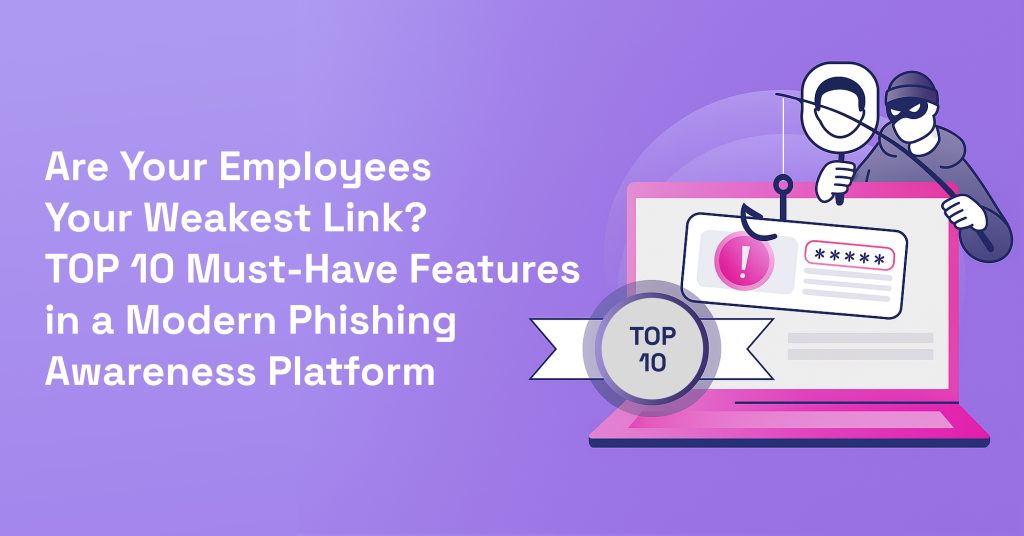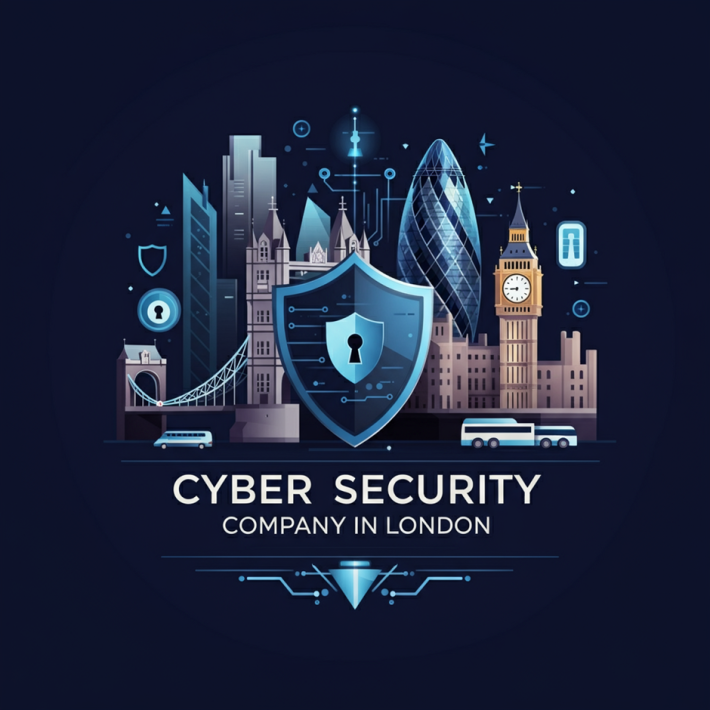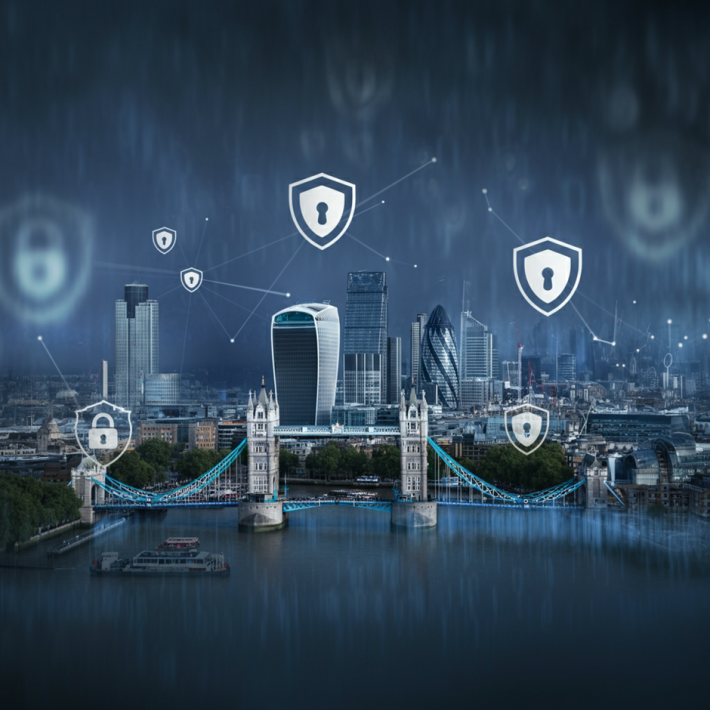TOP 10 Modern Phishing Awareness Platform Features

Modern Phishing Awareness Platform Features: Imagine this: you’re a founder juggling product launch, investors, hiring, and suddenly, a “vendor invoice” email hits your finance team. It looks perfect: your vendor’s name, the correct logo, and even a reference to a recent Slack thread. One click, and that’s your bank account emptied. This scenario now plays out daily. In 2025, founders across Reddit and Quora report that 73% of them can’t spot even AI-written phishing emails despite high confidence.

The core problem leaders face today: phishing is no longer about typos or suspicious links. Threat actors now use open‑source AI trained on your public and breached data to send emails that sound exactly like your C‑suite or vendors. In one thread, a user described receiving a message paraphrasing a private Teams conversation and nearly falling for it.
As a technologist, I’ve been tracking phishing since the early days, long before it became the dominant entry vector in 68% of cyber breaches. The earliest phishing scams were done comparatively mindlessly, often text-based email cons asking for passwords or bank details. Fast forward to today, and modern phishing has evolved into a multi-billion-dollar attack industry, bolstered by AI, social engineering, and business email compromise (BEC).
In the 2020s, while ransomware made the headlines, phishing continued to be the steady foot soldier of cybercrime. It’s the quiet intruder that lays the groundwork for credential theft, lateral movement, privilege escalation, and, yes, ransomware.
Founders and CEOs are sharp, but these AI‑crafted attacks mimic internal tone flawlessly, bypass traditional filters, and exploit human trust. With phishing-as-a-service (PhaaS) platforms launching over a million attacks in early 2025 alone, the scale of the problem is staggering.
The solution is to select a phishing awareness platform specifically designed for today’s threats, a product that turns your end-users from a threat to your best defense.
And not only any product. You require one with these essential features:
1. Realistic, Adaptive Modern Phishing Simulations
Modern Phishing attacks today are more professional than those from true colleagues. That’s why you require a solution that doesn’t simply assess gullibility but engages users with AI-forged, real-life phishing simulations spanning invoice scams to callback phishing.
Simulate a BEC-style email from your CFO asking for a vendor payment change and track response behavior down to the second.
2. AI-Powered Human Risk Scoring
Forget vanity metrics like “click rate.” You need individual and department-level human risk scores based on behaviors like link clicking, credential submissions, training completion, and reporting rate. Think of it as a cybersecurity credit score for your team.
SmartRisk Agent™, for example, calculates dynamic scores and helps CISOs visualize and reduce organization-wide human risk.
3. Automated, Personalized Training Journeys
Your users don’t need another 30-minute security video. They need adaptive microlearning that meets them where they are, short, personalized, and context-driven training triggered immediately after risky behavior.
High-risk user clicks a phishing link? The system immediately assigns a 3-minute explainer video about that exact phishing type, no admin intervention required.
4. Reporting Button Embedded in Email Clients
All email accounts should be subject to multi-factor authentication (MFA). Even when passwords are hacked, MFA provides a second barrier. Using a security token, an OTP, or a biometric scan, MFA significantly reduces unwanted access. When a hacker guessed a junior associate’s password, a Chicago law firm was able to prevent a data breach. However, the hacker was unable to get past the firm’s MFA, which used biometric login.
Note: MFA is required for both public and private sector organizations by Dubai’s Digital Security Strategy 2024; all Gulf companies should adopt this practice by 2025.
4. Regular Employee Training: Make Cybersecurity Part of Culture
Training only goes so far if users can’t easily report phishing attempts. The best platforms include a native “Report Phishing” button in Outlook, Gmail, and mobile clients that feeds into your security stack in real time.
5. AI Template Generator for Simulations
The days of writing phishing test emails by hand are over. Top platforms feature an AI-driven template builder that can generate emails modeling the newest threats, such as callback scams, QR phishing, and vendor impersonation.
The tools are designed to keep up with the changing face of phishing, utilizing actual threat data to keep simulations cutting-edge and realistic.
6. Executive Dashboards and Audit-Ready Reporting
CISOs, compliance professionals, and board members need numbers. You require a platform with real-time dashboards, downloadable widgets, compliance mapping, and PDF-ready reports aligned with SOC 2, ISO 27001, and NIST CSF.
Executive dashboards should show training status, simulation outcomes, user risk scores, and benchmarking by industry.
7. Continuous Content Updates and Threat Intelligence Feeds
Static training libraries will not be done in 2025. Leading modern phishing awareness solutions are fueled by real-time threat feeds, updating content regularly with the latest types of scams, regulatory threats, and social engineering techniques.
Look for CISA’s Known Exploited Vulnerabilities Catalog and CERT advisories integrations to stay current..
8. Multi-Language + Accessibility Compliant Training
Even with strong defenses, incidents can happen. A predefined Email Incident Response Plan ensures Your worldwide workforce is entitled to the same level of protection. Platforms need to provide localized training in various languages, with accessibility features that pass the WCAG test. Cyber resilience needs to be inclusive.
This feature isn’t a nice-to-have but a requirement for regulated sectors and international teams.
- Gamification and Incentives
Engagement is everything. Platforms with gamified features such as leaderboards, badges, and team competitions have much higher participation rates compared to bland, checkbox training.
- Seamless Integration
Don’t discount how much users love seeing their name at the top of a leaderboard or receiving an Amazon gift card for quick reporting.
Phishing is still the number one way attackers get in. And in a world of generative AI, adversarial automation, and deepfake-driven social engineering, your best line of defense is still your people. But only if you train them effectively.
You need a modern phishing awareness platform that does more than tick compliance boxes. You need one that:
- Detects risky behavior early
- Adapts training based on performance
- Integrates with your stack
- Makes cyber-hygiene, a nature
If you’re still stuck with old-school awareness programs and manually set phishing tests, you’re already behind.
With the right mix of AI-based simulations, personalized training, real-time reporting, and transparent dashboards, you can create a culture of cyber resilience. Because in 2025, security isn’t about tools, it’s about empowering people to become your first and best line of defense
SimUPhish is the go-to Human Risk Management (HRM) training program trusted by founders, offering a complete, 360-degree solution for building a security-aware, phishing-resilient team.
Your users are your biggest risk and your greatest asset. Let’s start treating them that way.
Let your email be a strength, not your weakest link, by SimuPhish.
Follow Us for More Tips
Help others stay safe, too. Share this guide and follow SimuPhish for more real-time cybersecurity tips:
- Instagram: https://www.instagram.com/simuphish/
- Facebook: https://www.facebook.com/simuphish/
- LinkedIn: https://www.linkedin.com/company/sim-u-phish/
- Pinterest: https://www.pinterest.com/simuphish/




